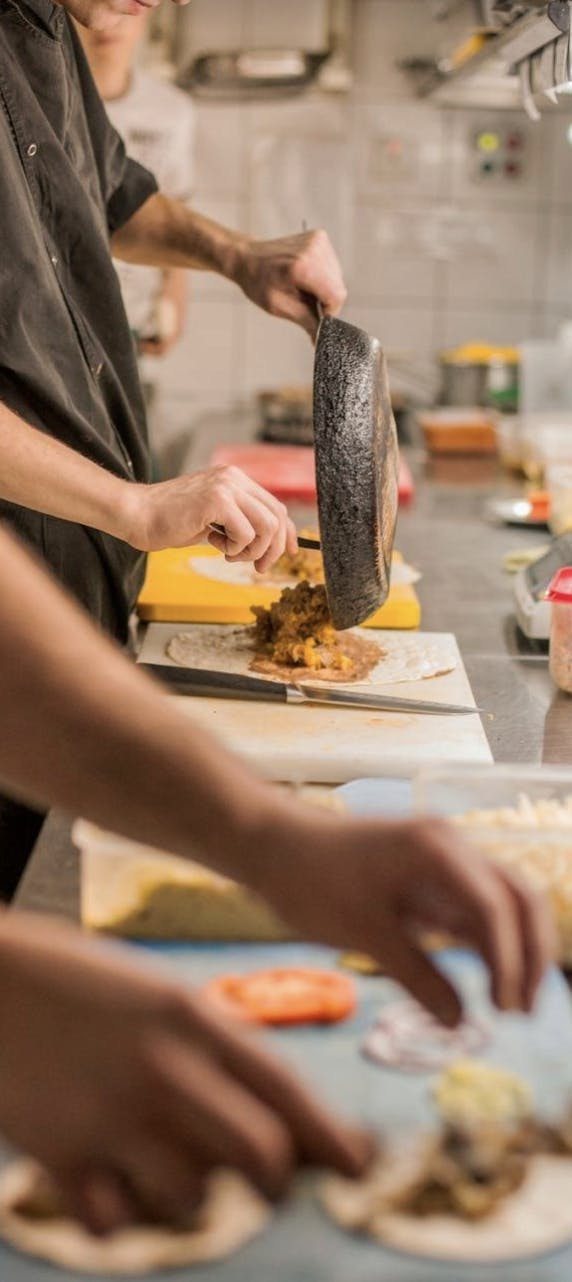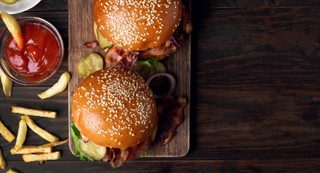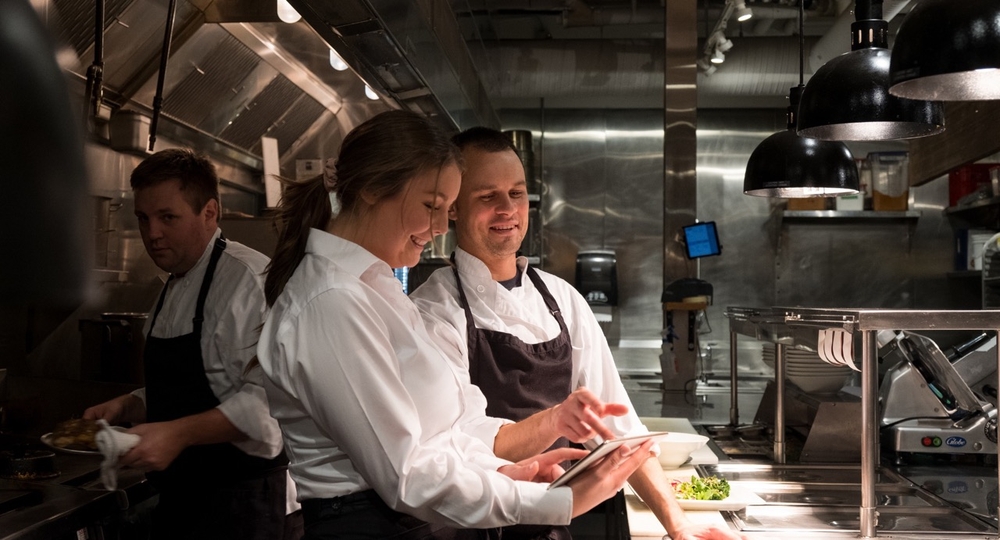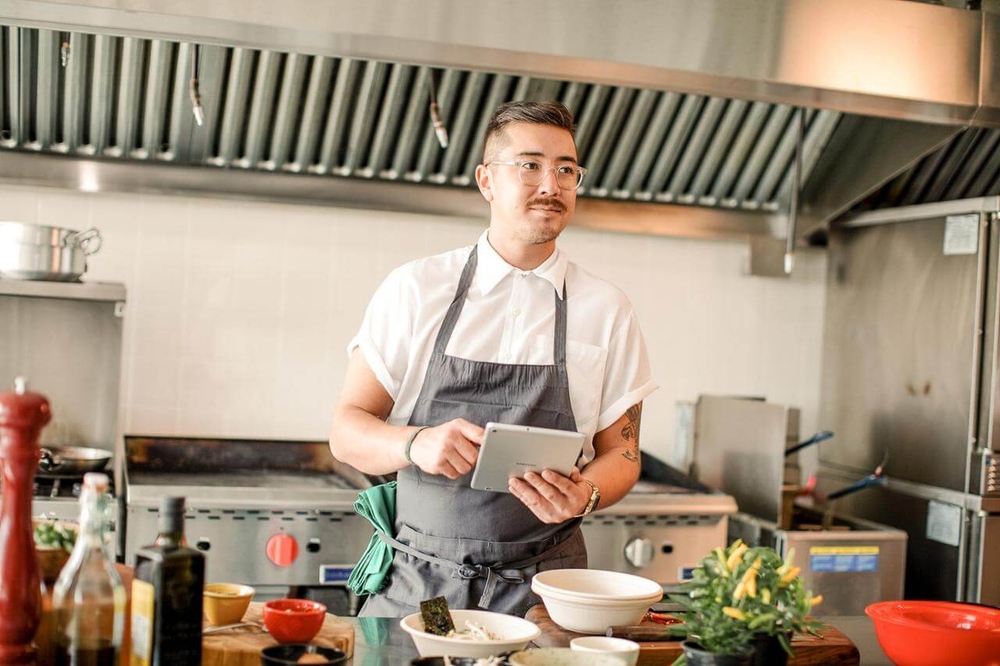Restaurant SEO: Enhance Your Online Presence
Table of Contents
CloudKitchens
How many tacos can be delivered from a 1000sqft restaurant?
The same amount as a 200sqft ghost kitchen.
Maximizing Visibility: A Comprehensive Guide to Restaurant SEO
Personal recommendations, random walk-ins, and local advertisements can all help reel hungry customers into your restaurant, but they all pale in comparison to the potential of online searches.
A mind-boggling 86% of diners find new restaurants online before trying them out. Additionally, 62% of the time Google is their first choice for learning about unfamiliar eateries.
Search Engine Optimization (SEO) refers to a variety of techniques that can elevate your website to the top slots on Search Engine Results Pages (SERPs). Restaurant SEO is a necessity for modern restaurateurs hoping to grow their business and compete in their city’s culinary scene.
What is SEO, really?
An eye-popping 93% of all internet traffic is driven by Google. That means the vast majority of product purchases, website visits, and other online activities begin with a simple Google search.
Let’s pretend it’s lunchtime and you’re hungry. Craving a killer kebab, you pull up Google and search for Turkish food near me. The first few results will usually be promoted pages from restaurants that pay for Google’s advertising services. Following these will be the actual search engine results that Google compiles based on:
- Keywords and how closely the content of different pages matches them
- The quality of the content and media on said pages
- The website’s popularity
- The geographical location of the searcher
- How closely a website’s URL matches the search terms
- The reliability, modernity, and usefulness of different pages’ content
- How much a site interlinks to other related and relevant pages
- Other, similar factors
Unfortunately, there’s no cut-and-dry way of determining what combination of these techniques will net you a top spot on SERPs. Google updates its search algorithm thousands of times per year—meaning, usually more than once a day, exactly what will land your page near the top changes.
Nonetheless, top results will generally be relevant, contain high-quality content, and be in relative geographical proximity to the searcher (depending on the nature of the search terms).
Let’s return to our lunchtime scenario for a moment. After the promoted pages, the top results will likely be local restaurants that serve kebab and other Turkish cuisine, have a high degree of user engagement on their pages, and post relevant, quality content.
Diners often choose their restaurants in the moment: 89% of all dining research is done on mobile devices—likely when people are already hungry and deciding what to eat. Thus, if your restaurant turns up as the first Google result in such scenarios, you’ll capitalize on these instantaneous eaters instead of your competition.
Effective SEO strategies to boost your restaurant’s visibility
As noted, there are no surefire ways of becoming the top dog on Google’s SERP. There are, however, time-tested strategies that SEO copywriters, digital marketers, and savvy entrepreneurs use to routinely stay ahead of the pack.
#1 Utilize relevant keywords
As Google itself admits, matching keywords between search terms and your website’s content is the most basic signal that your page contains relevant information. They also call keywords the cornerstone on which they build other aspects of their algorithm.
About a decade ago, matching keywords would have almost certainly scored you a high SERP ranking. As Google’s algorithm has evolved, however, it’s begun to try matching users with results based on their intent, rather than the exact keywords they search.
The intentions of searching for tacos near me or best Mexican food in (city), however, are fairly unambiguous: you want to feast on some superlative south-of-the-border cuisine. By all accounts, Google recognizes this and will redirect you to relevant results based on keywords such as taco or Mexican food. Thus, optimizing keywords is still a top SEO strategy and 39% of marketers consider it the most essential tool for garnering a high SERP ranking.
#2 Optimize your website’s contents for web crawlers
Web crawling is the name given to the process by which Google and other search engines discover the content of different websites. Generally, web crawling works by bots searching pages for relevant:
- Text
- Pictures
- Videos
- Files
After locating pages with information relevant to specific terms and queries, the web crawler will then index them to make them discoverable on the search engine.
If your page hasn’t been discovered and indexed, hungry diners won’t be able to find it on Google. You can try waiting around for the algorithm to eventually find you and, if your site is high-quality and contains industry-relevant information, it generally does a pretty solid job of indexing pages fairly quickly.
On the other hand, you could always get ahead of the web crawlers by manually submitting your website’s URL to Google Search Console. Generally, Google will review and index your page within one hour of receiving a request—so manual submission is almost always the fastest route to discoverability. If you have a robust site, however, do keep in mind that you’re allowed a maximum of ten manual URL submissions over a 24-hour period.
#3 Target your area with local SEO practices
There’s likely no other industry where local SEO efforts are as important as restaurants. Most Americans won’t travel more than half an hour to eat so, when implementing your restaurant’s SEO strategy, be sure to target diners in your area.
The good news: many consumers use Google to discover nearby businesses. 46% of Google searches are for local information—meaning customers already want to find your restaurant.
To make sure they can:
- Ensure your name, address, and phone number are consistent – Whether it’s on your social media pages, website, or Google My Business, make yourself easy to find by ensuring all relevant contact info is accurate, up-to-date, and consistent across all your platforms.
- Optimize your About Us page – Include locationally relevant information, such as your exact address, how long you’ve been in the community, and information about your local team members. Use local terms, such as your area’s name (e.g. West Hollywood), to heighten your chances of showing up in local SEO rankings.
- Utilize social media – Add local friends, put your address on all your pages, and ensure your profiles are all linked to your website and vice-versa. We’ll touch more on using social media to optimize your online presence in the next section.
Other considerations for optimizing your online presence
Getting hungry customers to find your website is only half the battle of optimizing your online presence. You’ll likewise need to convince them to actually come to your restaurant and give your food a go.
Positive reviews are perhaps the most effective way to entice customers into your restaurant. An incredible 94% of Americans read online reviews to inform their dining decisions. Likewise, studies found that the top Google results almost always have higher star ratings than businesses in lower positions.
Social media is also a major outlet for highlighting your business and attracting customers as:
- Nearly two-thirds of consumers use social media to browse for and discover new restaurants
- 88% of people trust restaurant reviews and recommendations from people they know on social media
- It can drive potential customers to interact with and discover your pages—especially if you post videos, which raise user engagement by 33%
Other key considerations for optimizing your online presence and ensuring your restaurant is discoverable by everyone in your community include:
- Making your pages mobile-friendly – As mentioned, 89% of all restaurant research occurs on mobile. So, if users find you near the top of Google but navigate to a site that doesn’t support their phone’s browser, they’re likely to tap on other results until they can load a page.
- Claiming your Google My Business listing – US consumers trust the information they find on Google more than any other major website. So, make sure to claim your Google My Business page and fill it in with your location, hours, and other relevant information. Likewise, if anything about your restaurant changes, make sure to update it as soon as possible so your fans always know where, when, and how to find you.
- Investing in Google’s advertising services – 75% of Google users say ad results make searching easier. Give them exactly what they want by pushing your restaurant to the top of related searches—and get what you want by increasing your page engagement and number of guests served.
All of these steps will both make your online presence more useful and trustworthy for your potential customers and push your site up in SEO rankings. It doesn’t matter if your business is in Cleveland or California; these strategies will make the difference for your marketing strategies.
Keep in mind that SEO is an ongoing effort, and today’s tactics might not be as effective in a day, month, or year. It’s best to continually monitor your SEO techniques, keep on top of digital marketers’ latest strategies, and refine your approach to match ongoing market trends.
Pro tip: Keep track of how many people search for your restaurant using Google Trends and how much revenue you pull in from SEO—if both are on the rise, you’ll know your tech-savvy techniques are paying off.
Optimize your online presence with SEO. Optimize your delivery game with CloudKitchens.
Speaking of Google Trends, searches for ghost kitchen have shot up ten times in popularity over the last half-decade. If you have groundbreaking restaurant ideas and you’re wondering how to start a restaurant (or how to optimize your current restaurant business for delivery), a ghost kitchen from CloudKitchens is your answer.
Ghost kitchens are shared commercial kitchens that present a more realistic point of entry to the culinary scene than traditional brick-and-mortar eateries. They allow you to pay for only the time you use behind the line and eliminate wait staff, dining rooms, and other expenses that subtract from your bottom line.
If you’re considering entering the industry but wonder “How much does a restaurant owner make?”, combining SEO practices with CloudKitchens can offer healthy earnings and help you grow your business’s profitability. Browse our locations to start improving your online recognition and culinary excellence.
Explore ghost kitchen locations across the US:
- Ghost kitchens in Seattle
- Ghost kitchens in San Francisco
- Ghost kitchens in LA
- Ghost kitchens in NYC
- Ghost Kitchens in Toronto
- Ghost Kitchens in Atlanta
- Ghost Kitchens in Dallas
- Ghost Kitchens in Chicago
- Ghost Kitchens in Denver
- Ghost Kitchens in Miami
| DISCLAIMER: This information is provided for general informational purposes only and the content does not constitute an endorsement. CloudKitchens does not warrant the accuracy or completeness of any information, text, images/graphics, links, or other content contained within the blog content. We recommend that you consult with financial, legal, and business professionals for advice specific to your situation. |
Sources:
PR Newswire. Decoding Diner Discovery: BentoBox’s 2023 Diner Journey Report Reveals that Patrons Digitally Connect with Restaurants Before Dining IRL. https://www.prnewswire.com/.
Yahoo! Finance Canada. Google Is Making A Major Change To Its Restaurant Ordering Feature. https://ca.finance.yahoo.com/.
Forbes. Top Website Statistics for 2023. https://www.forbes.com/.
Think with Google. Search Engine Optimization (SEO) Starter Guide. https://developers.google.com/.
Search Engine Journal. History of Google Algorithm Updates. https://www.searchenginejournal.com/.
Think with Google. 89% of dining research is done by mobile before visiting a restaurant.. https://www.thinkwithgoogle.com/.
Search Engine Journal. The Top 3 Google Ranking Factors That Really Matter. https://www.searchenginejournal.com/.
Tech Target. A brief history of Google algorithm changes. https://www.techtarget.com/.
HubSpot. The Ultimate List of Marketing Statistics for 2024. https://www.hubspot.com/.
Search Engine Journal. Website Crawling: The What, Why & How To Optimize. https://www.searchenginejournal.com/.
Statista. What is the maximum length of time that you would drive to a place to eat?. https://www.statista.com/.
HubSpot. A Comprehensive Guide to Local SEO in 2023. https://blog.hubspot.com/.
Small Business Trends. 94% of Diners Will Choose Your Restaurant Based on Online Reviews. https://smallbiztrends.com/.
Search Engine Journal. How Google Reviews Impact Map Pack & Organic Search Rankings. https://www.searchenginejournal.com/.
Gitnux. Restaurant Social Media Statistics And Trends in 2024. https://gitnux.org/.
Search Engine Journal. Americans Trust Google More Than Facebook, TikTok. https://www.searchenginejournal.com/.
Demand Sage. Google Ads & PPC Statistics 2024 (Revenue & ROI). https://www.demandsage.com/.
Google Trends. Ghost kitchen. https://trends.google.com/.
More insights & stories
There’s more where that came from.
Get in the know and check out our additional insights




